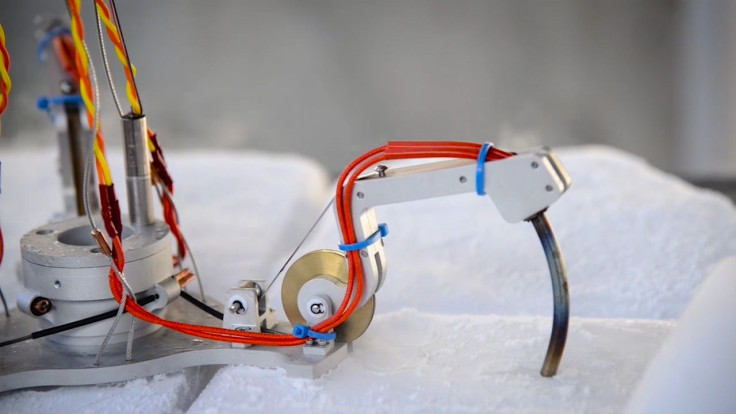Search For Alien Life: Robots Will Dig Through Moon Ice With Buzzsaws, Catapults

If we’re ever going to find alien life in outer space, we may have to dig deep — into the thick ice of a another planet’s surface.
NASA’s Jet Propulsion Laboratory has put together a bunch of robot prototypes that could traverse and bore through ice on moons in the farthest reaches of our solar system, ones that scientists believe may contain liquid oceans and thus potentially could be harboring extraterrestrial life.
JPL says those moons might include Enceladus, one of Saturn’s moons and a favorite of some scientists because it has internal heat as well as an underground ocean. There’s also Europa, a moon of Jupiter; and Saturn’s largest moon, Titan, where there’s so much static electricity that the sand particles on its surface stick together so tightly you wouldn’t need water to build a sand castle.
Read: The Signs of Alien Life on Other Planets
According to a NASA video (below), one of the features of the developing moon robots is a catapult arm that could launch a smaller sample-collecting machine before pulling it back with a tether. There are also heated prongs that melt ice, drills and buzzsaws to power through the blocks, and “special wheels to cross ice that behaves like sand.”
Some ice, in particular on Enceladus, is like sand in that it is made of loose grains, and that strange consistency can be found around attractive sampling areas where there are “fissures that blow out jets of gas and icy material from below the surface.”
There are also the challenges of temperatures substantially colder than freezing and extreme radiation.
NASA is still reviewing the prototypes.
“We’re working with NASA Headquarters to identify the specific systems we need to build now, so that in 10 or 15 years, they could be ready for a spacecraft,” Tom Cwik, the head of JPL’s Space Technology Program, said in a statement.
The robots are not the first NASA has developed for a hypothetical mission to another planet. It also has the PUFFER — short for Pop-Up Flat Folding Explorer Robot — that could accompany the Mars rover on a mission to the Red Planet, for example, and help by folding up to squeeze into tight spaces or getting over obstacles that the bulkier rover cannot.
About the new potential fleet of ice-exploring robots, Hari Nayar, who led the robotics research, said in a NASA statement, “One of the most exciting places we can go is deep into subsurface oceans — but doing so requires new technologies that don’t exist yet.”
See also:
© Copyright IBTimes 2024. All rights reserved.





















